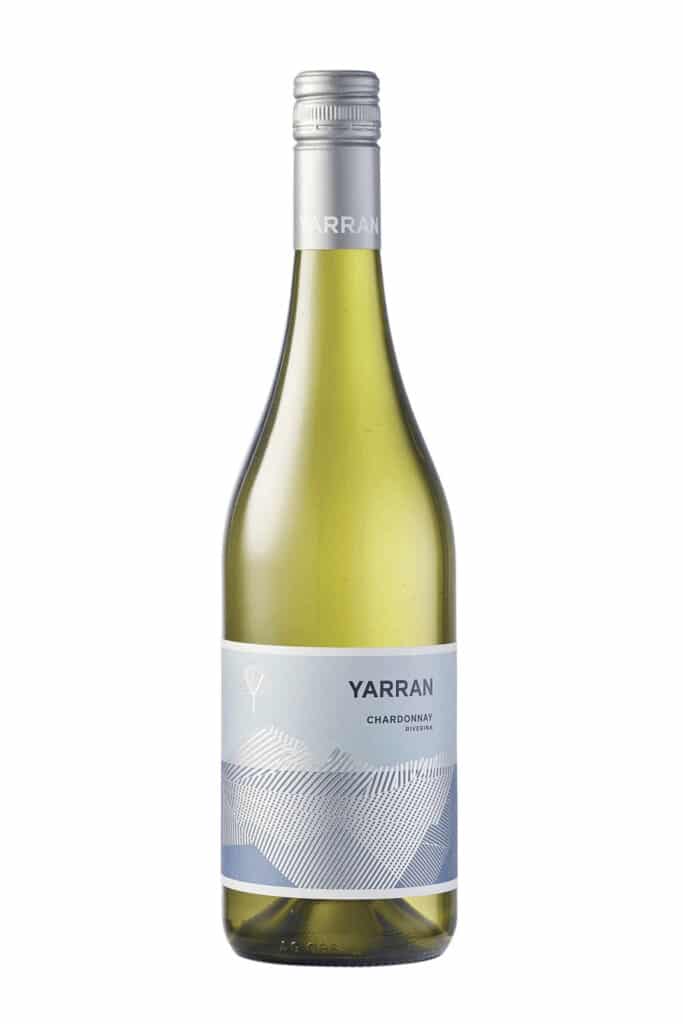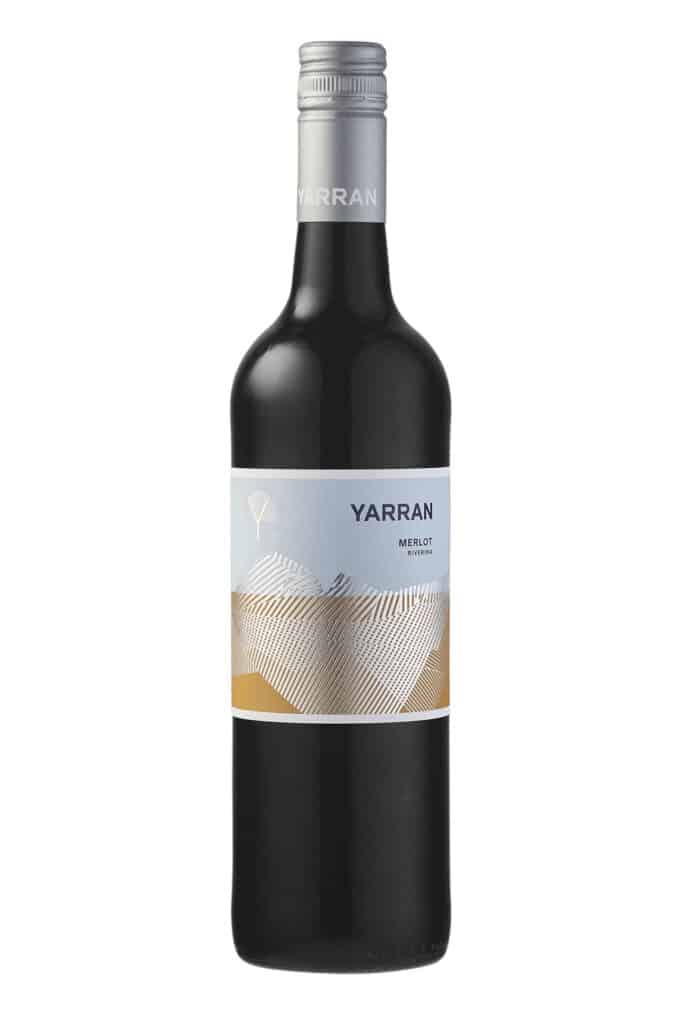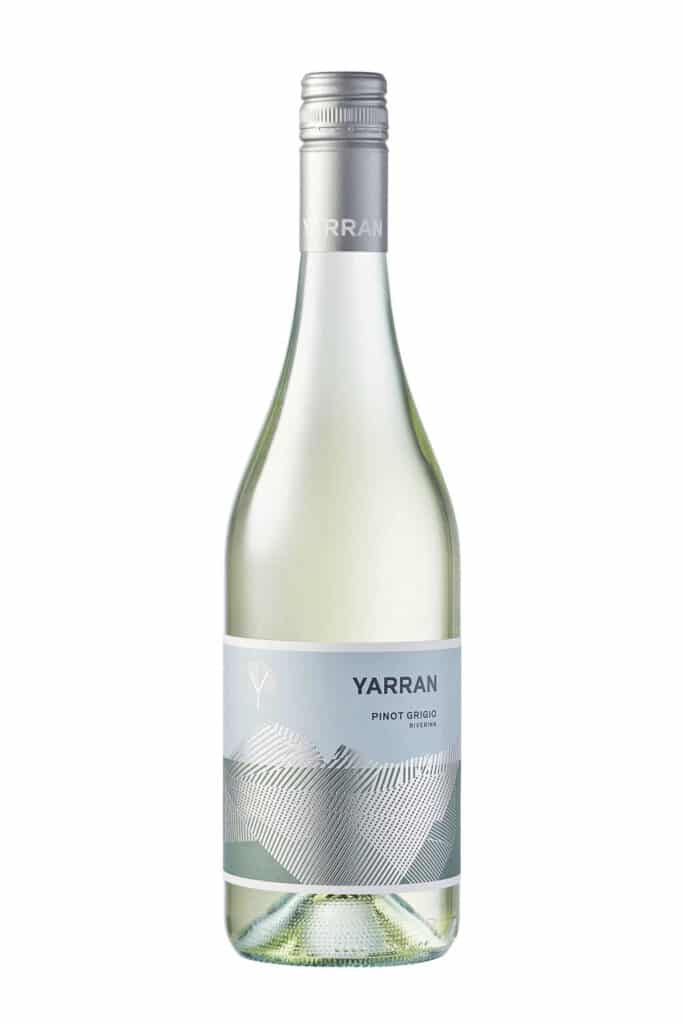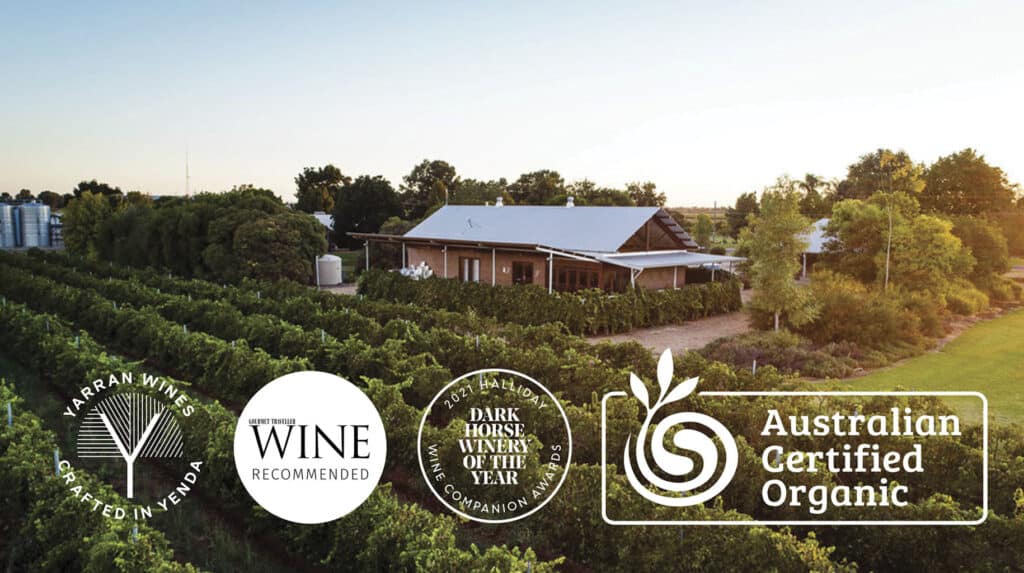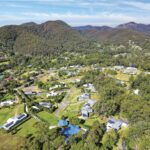WINE
The Organic Wines of Yarran
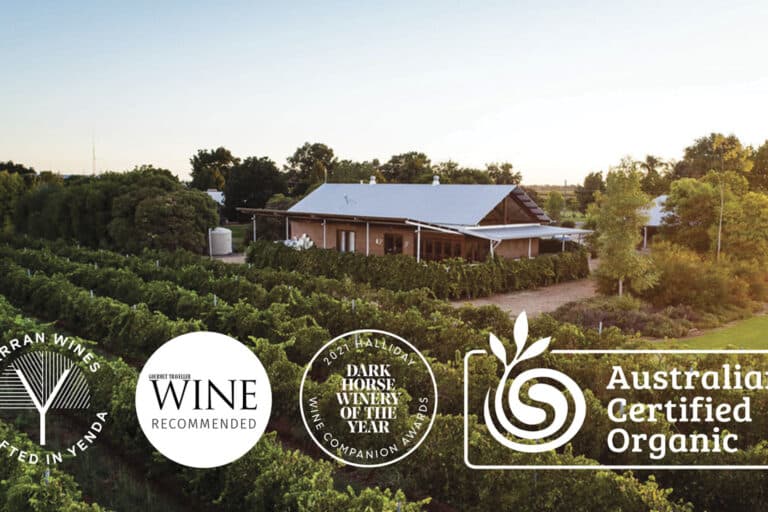
WORDS: Peter Panousis – Peter Pan Wine PHOTOGRAPHY Supplied
The Riverina region of NSW comes alive at last, with a new range of certified organic wines.
Not so long ago I wasn’t a fan of wines from the Riverina. Historically this region was only known for its very hot climate, high-yielding vines, arguably over-irrigated farms, fortified wines and later, producing bulk wines for casks. No wonder I was a hater! Thankfully, my view is now more endearing as the region has come of age, producing many new emerging and exciting alternative grape varieties and wines, an ever-increasing offering of new smaller wineries, and like most wine regions, an ever-increasing foodie culture and artisan venues like craft breweries, distilleries, cheeseries all now adding to the region’s ever-increasing popularity.
Where is the Riverina wine region?
Riverina is the largest wine region in New South Wales and is located around 550 km west of Sydney. More importantly, the region is a rich agricultural hub growing 25% of the state’s fruits and vegetables, 90% of citrus fruit, and 20% of total crops just to outline a few statistics. The region is over 9 million hectares in size and is highly irrigated with several dams including the great Murrumbidgee Irrigation Area (MIA) established in 1912 which diverts water from Australia’s third largest river, the Murrumbidgee. The topography of the region is relatively flat but there are elevations of up to 500 metres. The soil is very fertile containing limestone rubble
and red-brown earth. Griffith, Yenda, Leeton, Junee and Wagga Wagga are just some of the well-known towns located in the region. The area is famous for growing Semillon, Chardonnay and Shiraz; however, over 20 other wine grape varieties are grown in the region too. The climate is warm and described as Mediterranean with lots of hot sunny days (normally) with high evaporation and low humidity factors which are also important in minimizing disease. In autumn, however, when the conditions are favourable Botrytis (a fungus which rots the grapes leaving them sweet and ideal for dessert wines) occurs. There are over 18 wineries in the region including the famous De Bortoli winery which produces the world-class “sticky”, the dessert wine Noble One. Regardless, and in spite of Noble Rot (Botrytis), the region is home to organic farming.
Defining Organic
Specifically, Wine Australia defines organic viticulture and winemaking as “Grapes grown and processed using no synthetic or artificial additives, chemicals, herbicides, pesticides, fertilizers or genetically modified products or organisms”. Organically farmed vineyards also rely on natural treatments or homeopathic type treatments to treat the soil and plants. In short, the saying is “if you are good to the land, plants and livestock farms will flourish”.
But is organic wine preservative free? The answer is no, not necessarily. Sulphur dioxide (preservative 220) quite often occurs naturally in wine production; however, in both organic and biodynamic wine added sulphur is permissible but is kept exceptionally low with levels ranging from 25 – 75 parts per million (ppm) — sometimes higher but not as high as non-organic/biodynamic wines which have up to 500 ppm or more in wine. The use of added sulphur in wine is always a bit controversial but many naturally dried health food fruits and foods for example contain much more sulphur than wine. Some dried fruits may contain as much as 3000 ppm. The addition of sulphur is not a new fad in winemaking, rather it has been used over thousands of years to protect wines against spoilage.
Also, organic wines are not always vegan-friendly but many are. On the other hand, there are many non-organic wines that are vegan. Vegan-friendly winemaking techniques may use clay or charcoal rather than animal products to remove the cloudy haze by capturing all the particles and dropping them to the bottom of the tank instead of using animal products. For example, many non-vegan wines may use agents such as fish bladder proteins, egg whites (as chefs use to clarify consommé soup) or other animal proteins to remove the cloudy haze in wine. Another technique is to not filter or fine the wine at all thus leaving the wine cloudy and of course vegan friendly.
Is it Certified Organic?
Not all wines claiming to be organic are certified organic. Personally, I look for the certification on the back label of the bottle, just to see if they are the real deal. Certified organic wines follow strict rules and guidelines and are only certified after a 3-year assessment period. Once certified a vineyard is assessed yearly in order to retain certification. A recent article written by Daniel Honen and appearing in the Guardian states “There are two prominent organic certifying bodies in Australia that most winegrowers will use to prove that their wine is organic. These are Australian Certified Organic (ACO) and the National Association for Sustainable Agriculture, Australia (NASAA). Look out for the particular certifying body’s logo, which, in most cases, will be printed somewhere on the wine label but usually on the back. This is assurance that what you’re drinking is actually organic.”
Certification can be costly, especially for small producers, but hats off to the wineries that meet both the rigours and costs of certification. Look for either one of the logos and take comfort in knowing they are genuine organically certified wines. Also, be mindful that organic/biodynamic certifying bodies and their logos will be different in other countries; however, the assurance is there on the label. Enter Yarran Wines.
Yarran
The Yarran Winery is located on the outskirts of Yenda in the Riverina about 16 kilometres from the town of Griffith. The Yarran Winery is named after the beautiful native trees (acacia species) which have generous canopies of feathery leaves that dot the landscape, providing welcome shade. The original property, a fruit farm was purchased by Lorraine and the late John Brewer in 1978. There, grape vines were planted and twenty years later the first wine made was by the very young Sam Brewer, son of John and Lorraine. Sam Brewer celebrated his graduation from Charles Sturt University by crushing their first harvest of grapes and fermenting the Shiraz juice in an old milk vat. From humble beginnings, Sam went on and gained further experience later working for Southcorp and De Bortoli in Australia, and for wineries located overseas (in the US and China). In 2009 Sam decided to take the plunge and concentrate on the family winery with his parents.
At Yarran approximately 30 hectares are under vine with several grape varieties grown such as Pinot Grigio, Sauvignon Blanc, Chardonnay, Shiraz, Cabernet, Merlot, Durif just to name a few. The majority of the grapes from the estate plantings are sold but each year a few more have been made under the Yarran banner. The majority of the grapes come from the family vineyard but some parcels are sourced from growers, including Lake Cooper Estate in the Heathcote region. Over the past 3 years, Sam has focused on improving the quality of the estate-grown grapes, moving to organic conversion and certification. Yarran was the James Halliday Wine Companion 2021 Dark Horse of the Year receiving 5 stars as well from Halliday.
The Yarran cellar door overlooks the Cocoparra National Parkland and is cosy and inviting. In 2021 the cellar door was named ‘Best Cellar Door’ Riverina by Gourmet Traveller Wine and ‘The Must Visit’ winery by Escape Magazine. In terms of the actual winery, it is well-equipped with a potential crush capacity of 150 tonnes, producing approximately 20,000 cases per year. Yarran is also switching to solar power, removing animal products from their processes thus making it vegan-friendly, and making wines with lower preservatives and fewer inputs. Sam is focusing on lower yields, high quality and greater efficiencies whilst converting vineyards to organic certification. Sam explains “In conjunction with organics, we have been using a number of techniques such as hand pruning, foliage positioning and shoot thinning which are very hands-on but the increase in fruit flavours and intensity is worth the extra work. We have also replanted parts of the vineyard to varieties such as Montepulciano that really suit the warm, dry region and are more sustainable in the longer term.”
The next era for Yarran will see more organic certification, a bigger push into unique regional varieties, greater sustainability, more new wine styles, and hopefully many more great vintages.
Finally, what to drink?
For those who love a cheeky white for summer try the Yarran Organic Pinot Grigio – it’s an absolute belter for the price. Aromatic, with notes of apple and pear clean to the taste, bright palate yet with soft acidity and dry to the finish. The wine is a must with fresh seafood or lightly fried food like Greek-style calamari, tempura prawns or even arancini balls. The grapes were harvested in the cool of the night to retain freshness and acidity and there was no oak used to make this wine. The wine has received 90 points from the James Halliday Wine Companion.
The Riverina is famous for its Chardonnay and Yarran makes a cracker. This wine is true to variety, medium-bodied with rich notes of peach and ripe stone fruits. Some malo-lactic fermentation is present which converts grape acids to lactic acid thus making the wine soft and creamy to the taste. A total of 9 months in French oak adds to the wine’s complexity and richness. Try this wine with grilled fish with caper butter, spaghetti carbonara or even with brie and crackers.
Many who know me will also know I am a big fan of Merlot and Yarran’s ticks all the boxes. The Yarran Merlot is delightful with ripe notes of plum, Christmas cake and chocolate. The palate is rich yet soft with hints of vanilla. This wine is juicy, easy going and will pair well with a BBQ or any spicy Indian dish.
And finally try Yarran’s Shiraz with fruit sourced from Heathcote, Bendigo in Victoria and Hilltops in New South Wales. A bloody ripper of a wine to say the least with notes of ripe dark fruit, boysenberries, violets and cloves. The wine is matured in both American and French oak and is plump, juicy and rich. Fine tannins provide length and structure and ensure the wine is dry on the finish. The 2018 vintage received 95 points from the James Halliday Wine Companion and a Gold Medal at the Cowra Wine Show. Have this wine with roast lamb, BBQ or duck.
About the author
Enjoy happy but safe drinking. You can catch Peter on Facebook and on Twitter & Instagram at @peterpanwine. About the author: Peter Panousis is a Fine Wine Consultant who has worked for leading wine companies for over 17 years. Raised on the Gold Coast Peter has operated many restaurants and cafes and is formally educated with a degree in Hospitality Management, and he owned two award-winning restaurants. Peter has completed a Master’s degree and a Certificate IV in Adult Training. In wine, Peter is WSET trained and certified and has undertaken extensive wine education courses. He is also a former Member of ASVO (The Australian Society of Viticulture and Oenology), and a former Associate Fellow of AIM (Australian Institute of Management).


